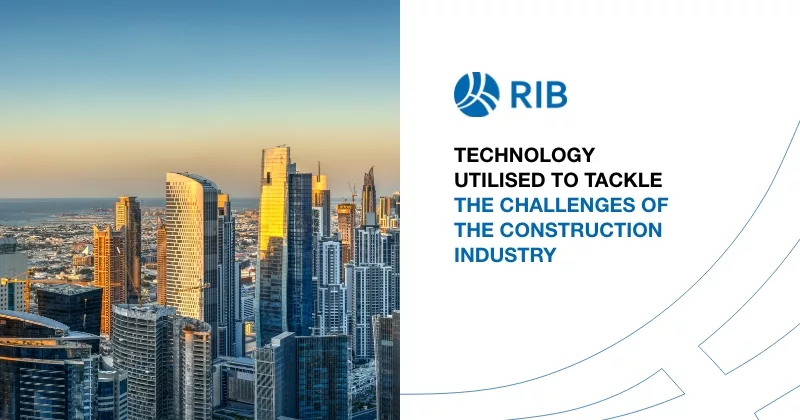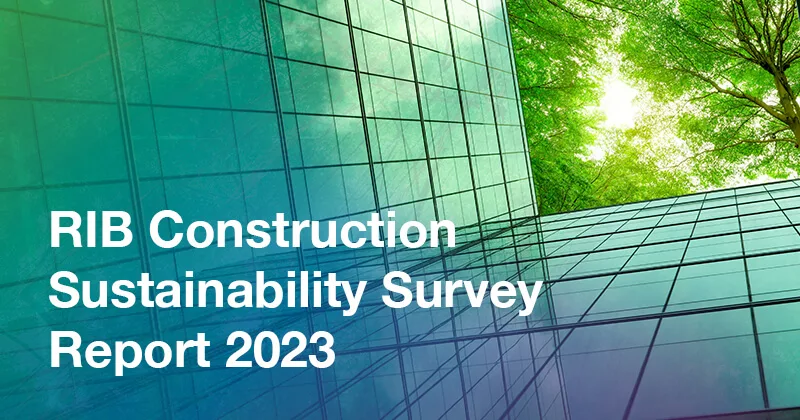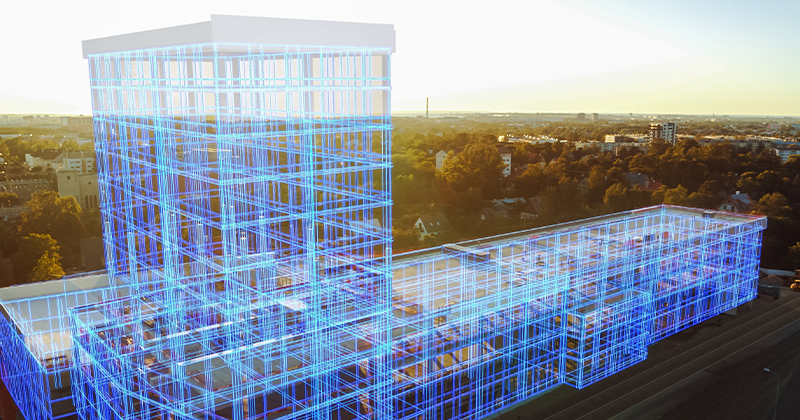24 mins read
Why You Need Clear Communication in Construction

- What is Construction Communication?
- The Importance of Communication in Construction
- Challenges of Construction Communication
- Consequences Of Poor Communication
- How to Develop a Communication Plan for Construction Projects
- Top 5 Tips For Effective Communication In The Construction Industry
- Conclusion
Communication in the construction industry is the cornerstone of success. From the start of a project to its final stages, effective construction communication is not just beneficial, but essential, as it can determine the success of a project.
Construction consists of many elements. These include different roles, tasks, and collaborations throughout the course of the project. To make sure that this all comes together smoothly, clear and effective communication is key.
When communication in construction is lacking, it can quickly escalate and cause a myriad of issues. Even minor misunderstandings at the beginning may evolve into major problems as the project progresses. Ultimately, this will lead to mistakes and rework, which can drain valuable resources. That’s why establishing clear, well defined channels for communication and workflows is so important to avoid such setbacks.
Let’s investigate how you can maximize and enhance the communication strategy throughout the construction process.
What is Construction Communication?
Communication in construction is an approach to interpersonal interactions that aims to promote understanding and collaboration between the different stakeholders of a project. Good communication ensures the project is completed within time and budget.
Construction projects involve a communication chain consisting of architects, engineers, contractors, subcontractors, suppliers, and clients. Each individual has their own unique expertise and responsibilities, and they collaborate with each other in an effort to ensure a seamless project completion. However, lack of clear communication can lead to the breakdown of this collaboration. Therefore, it is important for the flow of information to be constant throughout the process.
Because of the multitude of processes and tasks involved in making accurate decisions regarding the building process, good communication in the construction industry is essential. This includes everything from an architect supplying drawings to a contractor, all the way up until final paint coatings are approved for use. An extensive chain of responsibilities must be clearly defined and executed precisely by individuals fulfilling various roles throughout these complex procedures.
When there is clear communication, all parties involved in a project understand their tasks, obligations, and deadlines clearly. This promotes the free flow of ideas and enables potential problems to be identified at an early stage so that they can be addressed collaboratively before becoming major issues requiring reactive measures.
Misunderstandings or inaccurate instructions passed along the line of communication from contractor to subcontractors, architect to builders, and beyond could result in defective completion of projects, tasks, and activities significantly affecting construction cost control.
Inadequate communication in construction or inaccurate instructions can also result in costly revisions to remedy errors. This may require additional scheduling and reconstruction efforts, which are not only time-consuming but also financially taxing. Consequently, the project may experience setbacks due to unnecessary resource allocation towards addressing these blunders. Given that profit margins are slender within this industry domain, any rework expenses could negatively impact the budget.
Putting in place effective communication and collaboration systems at the beginning of a project is essential to prevent exceeding budget and going over schedule. Teams need to be able to communicate efficiently from the very first planning stage right through to the end. This will not only enhance the construction project management process, but will keep the entire project on track. Importantly, it will also improve productivity and mitigate possible delay claims.
The Importance of Communication in Construction
Maintaining a strong chain of construction site communication will enhance each stage of the construction lifecycle. Let’s look at a few of the core reasons why you should focus on a solid construction communication strategy.

▷ Optimizing Workflow
The construction industry is always on a tight schedule, and any delays or miscommunication can cause costly obstacles that impact both the project timeline and budget. To prevent these setbacks, it’s essential to maintain clear communication throughout every phase of development to coordinate efforts toward achieving mutually agreed-upon goals related to deadlines, timing, and deviations from established plans.
By maintaining transparent communication in construction, project managers can identify potential obstacles and allocate resources efficiently, thus ensuring that the project runs smoothly. This is especially important in managing supply chain logistics, scheduling subcontractors, or resolving unforeseen challenges, as open dialogue plays an integral role in guaranteeing seamless operations and efficient construction productivity.
▷ Strengthening Relationships
Communication helps to strengthen and build relationships in construction projects. Good relationships are key for any successful business operation. This helps to build trust and transparency between all the stakeholders involved.
▷ Improved Team Management
Effective construction site communication strengthens team management. A good project manager should be able to clearly communicate the desired daily and weekly activities to the team. This helps to form a clear roadmap for reaching the desired goals.
Strong communication skills from the site team to management will mean that everybody better understands the status of the project and the direction it needs to take. It will allow management to implement proactive and protective measures in-lieu of corrective measures if anything should happen on site. This is crucial as it leads to more accurate and efficient projects.
The better the communication is, the more confident the team becomes. Having a more open and transparent system in place allows the team to understand exactly what they need to do.
When challenges arise, open communication allows for the sharing of solutions. This means that teams can solve problems quicker. Ultimately, this leads to a team that is better equipped for the job and happier to take on the workload.
▷ Improved Collaboration and Feedback
With good communication channels, you also enhance collaboration in construction and creative innovation. Team members can share ideas and experiences for others to learn from. This helps to inspire stronger ideas and better collaboration on finding the best solutions for projects.
Communication leads to feedback. Feedback loops allow you to track performance and understand where there is success and where there are issues and concerns. Being able to communicate the strengths and downfalls of a project is one of the best ways to learn. By doing so, you can improve your strategies and tactics for future projects.
Ultimately, transparency and strong communication results in a better outcome. Results are best achieved through good communication systems. They keep everyone involved on the same page, updated, and aware of deadlines and goals.
Challenges of Construction Communication
One of the biggest challenges of construction site communication is the lack of effective communication on the ground. Poor communication can stem from various factors, such as ambiguity, miscommunication, insufficient feedback, lack of up-to-date information, or incorrect assumptions (among others). These issues can be compounded by language barriers, technical jargon, and even time differences. In addition, vague or inadequate information in terms of access, flow, and timing is also a typical complaint.
Another major reason for ineffective communication in construction projects is information silos. This is when information is frequently confined to particular projects, teams, and departments, or distributed via different tools. When information becomes isolated like this, it can make it difficult to see the big picture.
Consequences Of Poor Communication
- Onsite confusion. One of the most significant problems miscommunication can cause is confusion, which can apply to anyone – from field workers to construction professionals. Inconsistent or incomplete reporting are but two factors that can lead to mistakes resulting in project delays and cost overruns.
- Project delays. Mistakes and delays in the project can be caused by various factors, including unclear messages, delayed information flow, and communicating with the wrong person.
- Overspending and exceeding budgets. Often, miscommunication and poor communication may result in extra and unnecessary expenditure. Because of an issue caused by miscommunication, you would have to spend money and time to rectify the mistake, which further delays the project.
- Safety risks. The construction industry is a high-risk environment, and many opportunities for injuries exist. One of the most common reasons for many job site injuries is poor safety communication: Workers may be unfamiliar with the terminology used for safety training (especially if they are new to the training), which makes it easier for them to disengage. Often, workers are also afraid to speak up when they discover a safety hazard. They think it’s easier to play if safe, since they are afraid of being criticized for pointing out potential hazards as soon as they discover them.
How to Develop a Communication Plan for Construction Projects
To ensure a successful construction communication system, it must be established at the onset of project planning and estimation. This crucial phase sets the foundation for all that follows. For example, getting feedback from team members on unit rates during this transparent process can lead to more precise cost estimation in construction projects for current and future activities. By implementing reliable technology as part of our systems, we promote open dialogue which can ultimately increase project value exponentially.
The following points outline how to develop a good communication plan for construction projects:

- Create clear channels. Establish communication protocols early in the project and make sure everyone involved is aware of how information is shared and disseminated.
- Invest in technology. Use document management and collaboration software to facilitate communication and optimize processes. Effective document management involves the use of tools, processes, and practices to effectively manage project documents and ensure their accessibility, accuracy, security, and traceability.
- Encourage open communication. Create an environment of open communication and give everyone on the team the opportunity to voice their concerns or share ideas to improve the project.
- Hold regular review meetings. Schedule regular meetings to discuss the status of the project, resolve issues, and ensure everyone is aligned with the goals.
- Document everything. Keep detailed records of all communications, decisions, and changes to the project scope to avoid misunderstandings or disputes.
- Use a single data source. Keep accurate records on one software platform with the help of professional construction reports to keep track of what’s happening at every stage and to make sure that everything runs smoothly during the project.
Top 5 Tips For Effective Communication In The Construction Industry
- Establish A Communication Chain Of Command
Managing a project requires establishing a clear chain of communication. Such channels are usually defined in the contractual papers and often mandate that exchanges between the owner and general contractor go through the architect.
The architect’s responsibility is to communicate with the consultants, while the general contractor relays information to suppliers and subcontractors. Usually, it is left up to a project’s superintendent to serve as the primary contact for these contractors.
Establish a clear line of communication that includes identifying points of contact with contact information for key team members. This is vital to ensuring that information is getting to the right people on time.
Luckily, modern digital construction technologies make communication easier by providing an online environment for all stakeholders to communicate regardless of location.
- Select the right communication channel for the message
On the construction site, people communicate through signs, drawings, hand signals, and meetings. Daily reports are drafted, photos are taken, requests for information (RFIs) are created, and change orders are reviewed.
All methods of communication have their advantages and disadvantages. Choosing the right method of communication can expedite and simplify the exchange of information. Sometimes a quick email will suffice, while in other instances a meeting may have to be booked for all key personnel on the project.
- Be An Active Listener
When holding project meetings, the whole point is to communicate and make sure everyone has a clear understanding of their roles and responsibilities. Don’t only ask questions at the appropriate times, but also be an active and not a passive listener: Try to understand what the speaker is trying to communicate from their point of view. Make notes on details you might need to get clarified, make eye contact, and make nonverbal signals like head nods to show that you are actively listening.
- Avoid confusion
Avoid using jargon or terms that the people you are working with don’t understand. Remember, with communication in the construction industry you want to make sure that your message is understood the first time you convey it. It’s all about being brief but comprehensive in your construction communication.
- Stick to the facts
As far as possible, you want to only provide or get the facts. Don’t over elaborate or include other information in your communications. Keep your personal opinions or feelings about a project to yourself, unless asked. If you feel your professional opinion could be valuable to the successful completion of a project, it is important to share it. Your company’s expertise is part of what landed you the project, so don’t be afraid to speak up.
Conclusion
Communication is the foundation of a fruitful construction project, achieved through cooperation among team members, efficient procedures, risk management and problem resolution. To thrive in an ever-changing industry environment where progress and superiority are sought after relentlessly, using pioneering technology and optimal methods becomes crucial for sustaining communication as the catalyst for innovation.
The value of innovative construction software such as RIB CanBuild should also never be underestimated, as these platforms can streamline your business and communication channels, fostering collaboration and reducing errors. Ready to build better with RIB? Book a demo today!

Most Recent
24 mins read
14 mins read
25 mins read
15 mins read

E-BOOK











